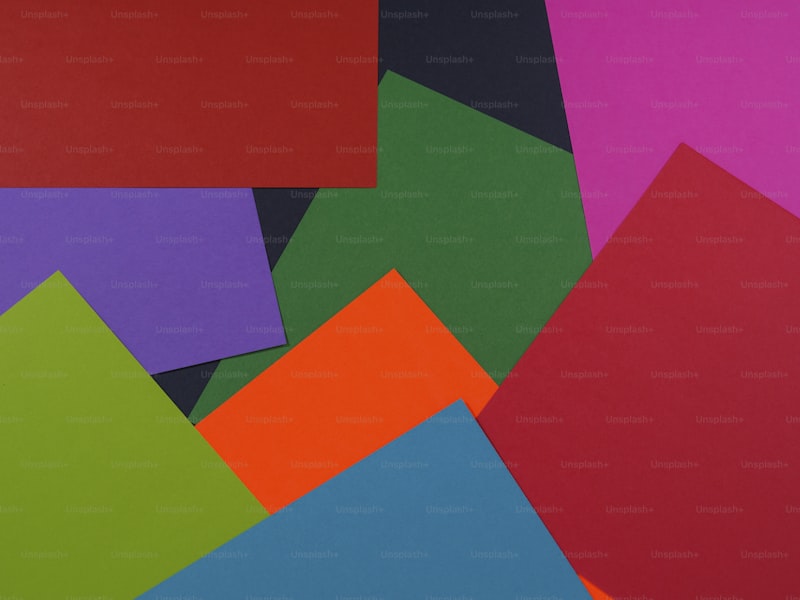Mastering Color Palette Considerations: A Comprehensive Guide
Choosing the right color palette is a crucial aspect of design that can significantly influence visual aesthetics and user experience. Whether you are designing a website, developing a brand identity, or creating art, understanding color palette considerations is essential. In this article, we will delve into the various factors that contribute to selecting the perfect color scheme, how it can affect perception, and tips for effective implementation.
Understanding the Importance of Color
Colors evoke emotions and communicate messages without words. Different colors have distinct psychological effects, which can impact how a brand or product is perceived. For example, blue often symbolizes trust and professionalism, making it popular among corporate brands, while red can evoke excitement or urgency. It’s important to be aware of color psychology when considering your palette.
Key Color Palette Considerations
When selecting your color palette, here are some key considerations to keep in mind:
| Factors | Description |
| 1. Brand Identity | Your color palette should reflect your brand’s personality and values. |
| 2. Target Audience | Consider the demographics of your audience, as different colors appeal to different groups. |
| 3. Color Harmony | Ensure your colors work well together using color theory techniques, such as complementary or analogous colors. |
| 4. Accessibility | Choose colors that provide sufficient contrast, making your design accessible to everyone, including those with color blindness. |
| 5. Cultural Context | Colors can have different meanings in different cultures. Be aware of these associations based on your target market. |
Types of Color Palettes
There are several common types of color palettes you can consider for your project:
- Monochromatic Palettes: Use variations of one color. This type creates a cohesive and harmonious design but can lack visual interest.
- Analogous Palettes: Combine colors that are next to each other on the color wheel to create a serene and comfortable design.
- Complementary Palettes: Utilize colors opposite each other on the color wheel. This creates a high-contrast and vibrant look, often used to draw attention to focal points.
- Triadic Palettes: Involve three colors that are evenly spaced on the color wheel. This types can produce a balanced and vibrant design.
How to Create a Color Palette
Establishing a color palette can be broken down into manageable steps. Here’s a quick guide:
- Research Inspiration: Look for designs, art, or nature that inspire you. Use platforms like Pinterest or design-focused websites to gather ideas.
- Select a Base Color: Choose your primary color that best represents your brand or project.
- Add Supporting Colors: Select complementary or analogous colors that enhance your base color.
- Test Your Palette: Apply your palette in mock-ups to see how the colors interact in real-life scenarios.
- Refine Your Choices: Don’t hesitate to adjust and refine. Gather feedback to ensure your palette resonates with your audience.
Color Contrast and Accessibility
Color contrast is not just an aesthetic choice; it is about ensuring accessibility. A well-designed color palette should consider users with visual impairments, including color blindness. Utilize tools like the WebAIM Contrast Checker to assess the readability of your text against the background color. Aim for a contrast ratio of at least 4.5:1 for normal text to ensure your design is accessible to all.
Common Mistakes in Color Palette Selection
Many designers fall into common traps when selecting a color palette. Here are a few to be aware of:
- Limited Color Choices: Sticking to one or two colors can create a dull design. Incorporate a range of colors for a dynamic appearance.
- Ignoring Context: Failing to consider the cultural implications or industry standards can lead to misinterpretation.
- Lack of Testing: Skipping the testing phase can result in a palette that looks good on paper but fails in execution.
Tools and Resources for Color Palette Creation
There are several online tools and resources available to help you create and test your color palettes:
- Adobe Color: This free tool allows you to create, explore, and save color schemes.
- Coolors: A fast color scheme generator that lets you create and adjust palettes easily.
- Canva Color Palette Generator: Upload an image and this tool will generate a matching color palette.
- Color Hunt: A curated collection of beautiful color palettes for inspiration.

FAQs About Color Palette Considerations
Here are some commonly asked questions about color palettes:
- What is the best color palette for a website?
The best color palette for a website depends on its purpose and target audience. Generally, a combination of calm, inviting colors with a strong contrast for call-to-action buttons works well. - How many colors should I use in my palette?
Three to five colors is often sufficient. Ensure you have a primary color, supporting colors, and accent colors for a balanced design. - Can I use more than one color palette in a project?
Yes, using multiple palettes can differentiate sections of a design but ensure cohesion across the overall project.
Conclusion
Incorporating thoughtful color palette considerations into your design process is integral to achieving a visually appealing and effective outcome. By understanding the psychological impacts of color, acknowledging accessibility guidelines, and carefully selecting your color combinations, you can create designs that resonate with your audience and enhance user experience. Always remember to gather feedback and be willing to adapt your choices as you see how they perform in real-world applications. A well-crafted color palette can transform your project and leave a lasting impression.
Embrace the journey of color palette selection with an open mind, and let your creativity shine through your designs!